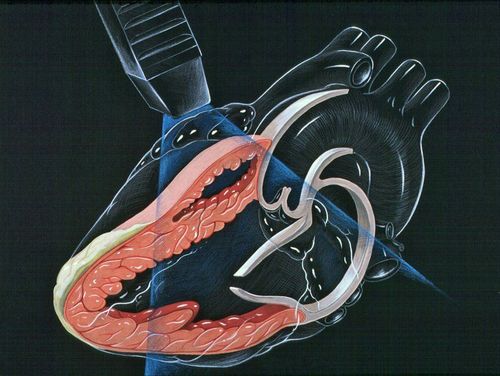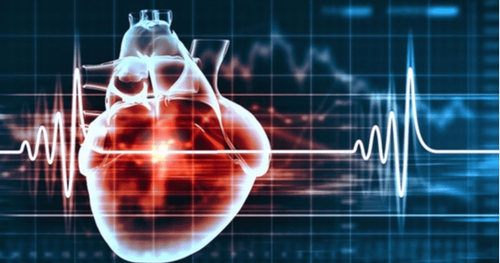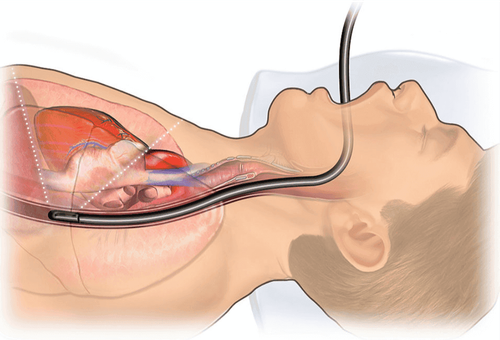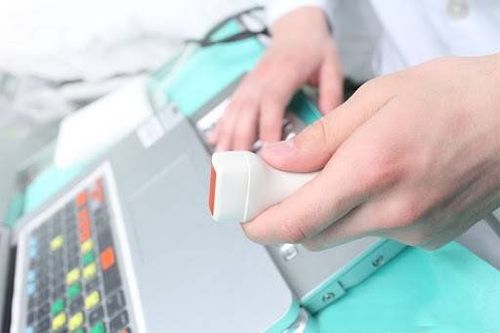This is an automatically translated article.
The article was professionally consulted by Specialist Doctor I Tran Cong Trinh - Radiologist - Radiology Department - Vinmec Central Park International General Hospital. The doctor has many years of experience in the field of diagnostic imaging.Transesophageal ultrasound may cause discomfort during the procedure and a mild sore throat 1-2 days later. However, a transesophageal echocardiogram does not pose any risk of any adverse effects on your throat or larynx.
1. What is transesophageal echocardiography?
An echocardiogram is a method of capturing detailed images of the major blood vessels and the heart. This method helps detect heart diseases such as: heart valves, tumors, blood clots, as well as aneurysms... There are many echocardiographic methods suitable for each condition and pathology of each person. Among them, transesophageal echocardiography is often used to diagnose heart diseases.Transesophageal echocardiography is an imaging technique performed by inserting an ultrasound transducer through the mouth into the esophagus to perform ultrasound, thereby having the most accurate results. Because the heart chamber is located next to the esophagus, so when the ultrasound probe is in contact with the esophagus, it means that it is close to the heart, the ultrasound waves will reflect back, thereby helping the doctor to see more easily the internal organs. inside of the heart as well as assess the health status or pathological lesions in the heart that the patient encounters.
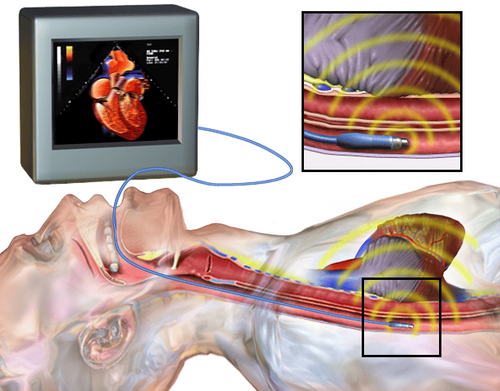
Siêu âm tim qua thực quản là kỹ thuật chẩn đoán hình ảnh được thực hiện bằng cách đưa đầu dò siêu âm qua đường miệng vào trong thực quản
2. Is doing transesophageal echocardiography painful?
This is a method of putting ultrasound transducers through the mouth, so many people will wonder if transesophageal echocardiography is painful? In fact, the transesophageal ultrasound may cause discomfort during the procedure and a mild sore throat 1-2 days later. However, a transesophageal echocardiogram does not pose any risk of any adverse effects on your throat or larynx.If you are too worried, you can ask your doctor to test whether the anesthetic used in the ultrasound can be used. The anesthetic will temporarily numb your throat during the ultrasound and have no side effects afterward. Besides, you should follow the doctor's instructions to avoid the complication of bleeding inside the esophagus due to strong rubbing with the transducer.
3. When is a transesophageal echocardiogram needed?
Anyone with cardiac abnormalities can have a transesophageal echocardiogram. Because this method gives more accurate and true results than transthoracic echocardiography. However, for cases, basic echocardiography is still more popular and only applies transesophageal echocardiography when the patient has a special condition as follows:The patient has just undergone surgery Transesophageal ultrasound will observe the heart more clearly, thereby helping doctors assess and monitor the patient's condition after surgery. The patient is having an injury outside the chest wall and must be bandaged and treated. In this case, the doctor will not be able to insert the transducer into the chest wall, so a transesophageal ultrasound must be performed. People who are overweight, obese or because the chest muscles are too thick, making it difficult for external ultrasound to see, should conduct transesophageal ultrasound.
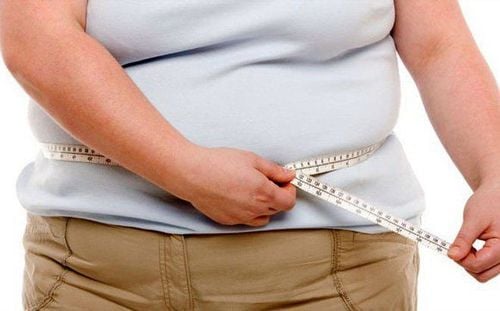
Người thừa cân, béo phì hoặc do cơ ngực quá dày khiến việc siêu âm bên ngoài khó quan sát nên tiến hành siêu âm tim qua thực quản
4. Notes and steps to perform transesophageal echocardiography
4.1 Notes when performing transesophageal echocardiography Before the ultrasound: You should not eat or drink within 6 hours before the ultrasound, if you need to take medicine, you should drink it with a little water; if you wear dentures, you need to remove them before the ultrasound; inform your doctor if you are allergic to anesthetics or anesthetics; keep psychological comfort, avoid stress and follow the instructions of the sonographer. During the ultrasound: You should lie still in a position, limit movement or should bite into the plastic jaw, cloth to protect the teeth and the ultrasound tube; During the ultrasound, if you feel something abnormal, give a signal to the doctor, do not move on your own. After the ultrasound: The anesthetic will work for some time after the ultrasound, so you should not eat or drink for 1 hour after the ultrasound; restricting traffic control; after the ultrasound you may have a mild sore throat or a little bleeding so there is no need to worry; in case there are signs of bleeding, stomach pain, choking ... after transesophageal echocardiography, you should notify your doctor. 4.2. Steps to perform a transesophageal echocardiogram The steps of a transesophageal echocardiogram include the following steps:Step 1: The doctor will conduct a preliminary examination, ask about your symptoms to decide whether to have an ultrasound. transesophageal echocardiography. Step 2: Prepare a dedicated echocardiogram, a small probe with a camera that can be inserted into the esophagus. Prepare an ultrasound room with all necessary equipment and skilled doctors. Step 3: Instruct the patient to lie on the bed in a comfortable position, avoiding stress and nervousness. Step 4: Anesthetize the patient's pharynx with Xylocaine spray or Lidocaine. Sedatives can be used for intravenous administration to the patient. Step 5: Slowly insert the ultrasound tube through the mouth wall into the throat and ask the patient to swallow it into the esophagus. The sonographer then slowly pushes the tube down to the most suitable position to view the chambers of the heart, and then moves the transducer to view the sides of the heart. Step 6: After the ultrasound and assessment is complete, slowly remove the probe from the patient's esophagus and ask the patient to rest to stabilize his or her mind. Step 7: Based on the transesophageal echocardiogram, the doctor will inform the patient about the health status of the heart, evaluate the pathology if any. In general, transesophageal echocardiography is quite safe and easy to perform, but it will cause discomfort and sore throat for patients, but it is not a concern if performed at a reputable medical facility. has a team of professional doctors and modern medical equipment.
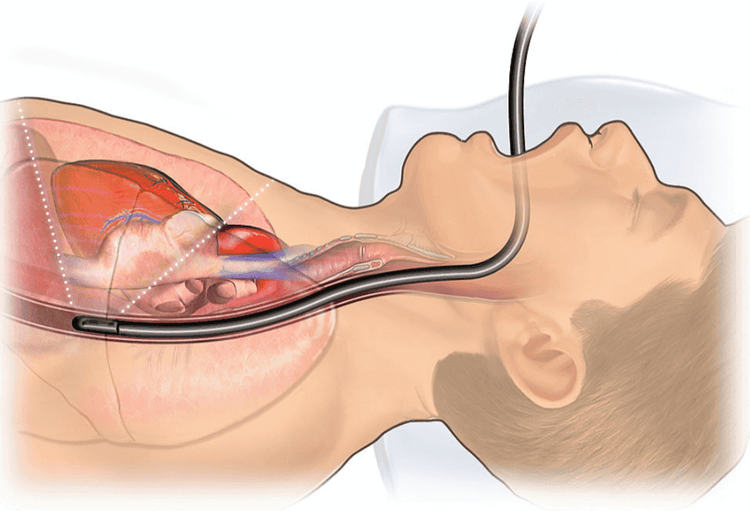
Nhìn chung phương pháp siêu âm tim qua thực quản khá an toàn và dễ thực hiện
Please dial HOTLINE for more information or register for an appointment HERE. Download MyVinmec app to make appointments faster and to manage your bookings easily.
LEARN MORE
Indications of transesophageal echocardiography Basic echocardiography: What you need to know Transesophageal echocardiography




